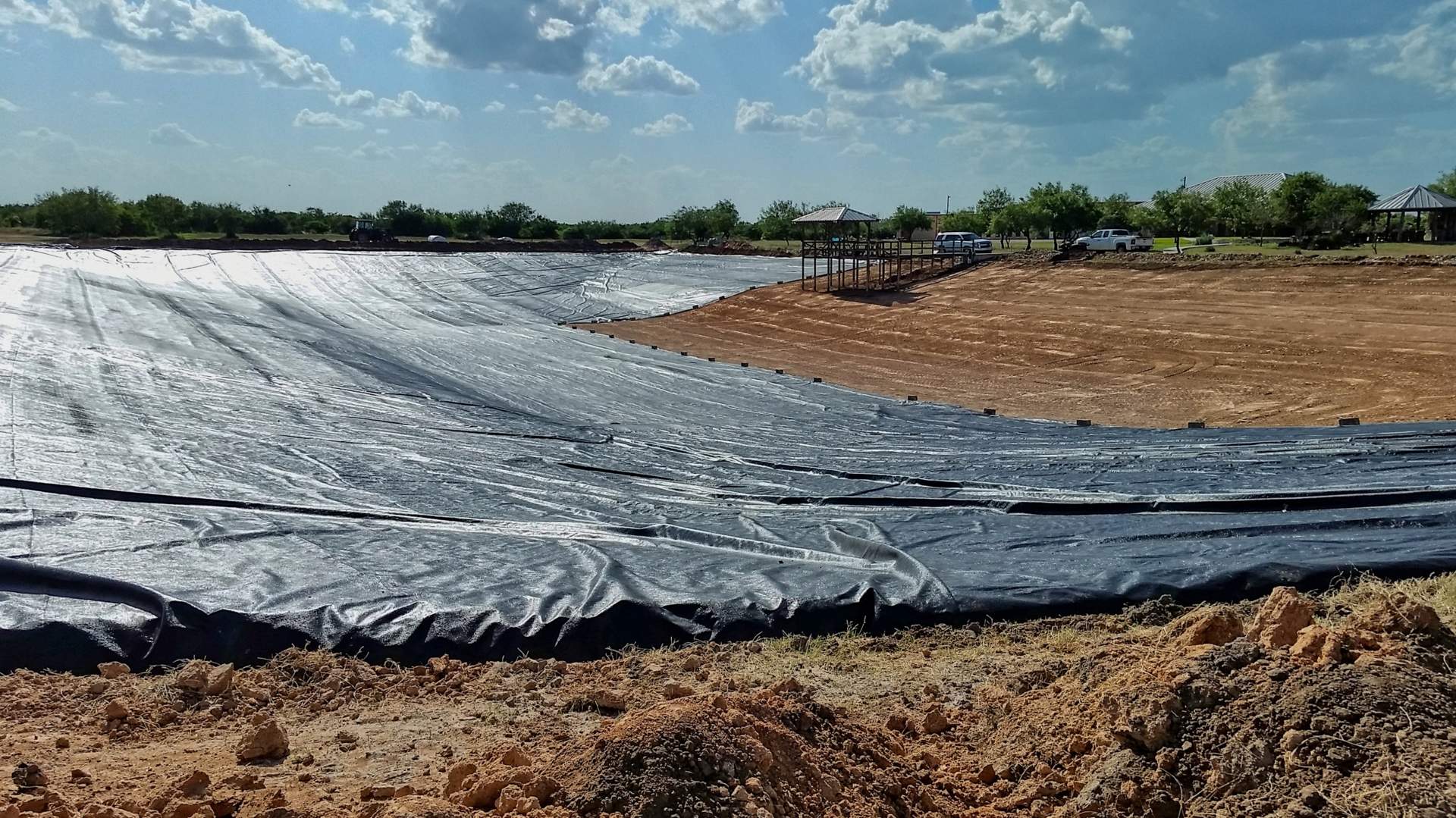There are many types and purposes of ponds, but the one characteristic in common is that they shouldn’t leak – and that’s down to the pond liner you use. Which type of material is best for your pond project, an RPE or an HDPE liner?
RPE is Reinforced Polyethylene, a woven product, and its great characteristic is the reinforcing. Because of the thread woven into the material, RPE is very flexible and very tough, and most resistant to puncturing. The very best RPE has the tightest thread weave. RPE is coated on both sides for its durability and resistance qualities.
HDPE is High Density Polyethylene. It contains a loose weave to hold together but is primarily chosen for its denseness. As a dense material it’s also somewhat stiff, even rigid, so a lot of the comparison between the two materials for any project hinges not only on field issues such as puncture-resistance and adaptability to the ground, but also on the practicalities of shipping to the location, and installation in the field.
Both materials are UV and chemical resistant and can be exposed to the weather. RPE is much more puncture-resistant than HDPE, and it’s resilient in temperature changes, while HDPE is not. HDPE is cheaper, and if the ground is cleared of obstructions can be deployed, but the earth does shift over time, and so this factor must also be considered for the longer term projects.
HDPE is less costly to purchase, but more technical to install, because while both materials can be welded in the field, HDPE comes in a smaller configuration that typically requires more welds. HDPE is generally a cost-effective solution for landfills and temporary exposed containment projects such as lagoons and mining. RPE is well suited to durable lining projects that will suffer water abrasion and irregular or rock contact.
RPE can be manufactured in large sheets and brought to the field folded or rolled. Western Liner typically supplies panels 150’x150′, but we can go as large as 350’x350′. At a 30-mil thickness, that’s about a 14,000 pound load to ship.
Western Liner’s Aqua series of RPE is about one-third the weight of comparable HDPE, and generally offers 3 times the strength for half the thickness. Aqua RPE also contains a thread made of polyethylene.
Not all RPE-designated products contain such a good thread material, or as tight a weave. The Aqua products are made from exclusively virgin resins, whereas other brands can easily contain recycled materials, especially in the threads.
HDPE in a 60 mil thickness is quite rigid and with a persistent memory – folding leaves a crease, and it doesn’t lay flat very well after. Because it doesn’t fold or stack well, HDPE comes typically in 22.5 feet wide rolls that are about 780 feet in length.
Panels need to be welded in the field by skilled technicians and specialized equipment. Multiple welds offer a lot of seams for potential leaks in the future. HDPE also expands and contracts in heat and cold, and during installation this can result in shrinkage after being uncovered overnight. This means that with an installation longer than the same day, the HDPE should never be buried until all the welding and fabrication is finished.
Installation in the field is a very significant cost factor that must be included in the project specifications. The costs of shipping to the location must first be compared for the two materials, followed by the costs of installation.
While there are many independent installers in North America, the skill quality of each crew can vary greatly. A pond liner half-buried under earth could for example contain a weak or missed seam that will cause seepage over time, and the fluid loss can be detected, yet the source of the leak can’t be discovered without uncovering the entire pond.
Project principals must ensure that an evidence trail exists to show the job was done right. This is not always something considered in the initial engineering design phase of a project. And because of increased regulation over agricultural water containment ponds, for example, many managers turn first to an engineer rather than to a supplier for advice, and by the time the supplier gets in the discussion, the specifications are already made.
Suppliers of geosynthetic materials will typically give free consultations up front, and those with their own installation crews will possess a wealth of practical experience that may not be obvious from the material specifications alone. It behooves principals and engineers both to contact the prospective supplier before setting the specs in stone, because industry experience with regard to the unforeseen practicalities can help to make or break a project.
So CONTACT US for a free Quote!


